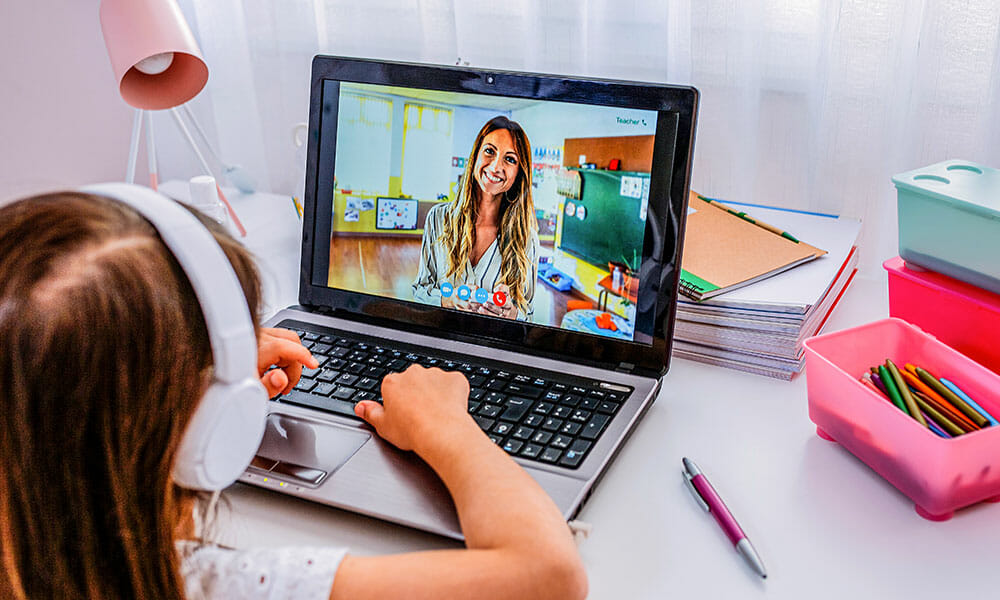If you’re a teacher struggling right now, there are some strategies that you can use to make your teaching more effective and really help your students learn, even if they’re not in the class in front of you. These do not rely on the most up-to-date technologies—in many cases, a thoughtful approach to pedagogy will overcome the disadvantage of mediocre tools. It’s a shift in your approach to teaching and the relationship with your students, which may be the most valuable of all.
You cannot directly translate teaching in the classroom to teaching online. To conduct your lessons exactly the way you’ve been conducting them (face-to-face) just won’t work. Here are my tips to help
Resist the urge to lecture
Sitting through a lecture—especially in video format—is hard for kids. If you do find a lecture is a useful way to get across information, particularly for your senior secondary students, video it. But know that putting videos online is time consuming and takes a lot of effort, so it may not be worth it. If you do, video small, short, sharp pieces, and make sure that students access this content themselves before any kind of interaction with you. If you’re lucky enough to have some synchronous time with your class, don’t waste it with lecturing.
Change the way you ask questions
No more hands up, no more asking for volunteers, no more saying, “does anybody want to answer this question?” That’s not going to work in this context. You’re going to have to ask open-ended big questions to individuals to keep them engaged. These should be questions that you don’t have an answer to yourself, shining a light on each of your students as they answer them.
It’s vital that you ensure your students know beforehand that you’re going to ask them questions so they can be prepared. They need to feel that you are watching them. As Big Brother-ish as that sounds, engagement is key right now.
Avoid ‘death by worksheet’
The first response to having less time for direct instruction is often an over-reliance on worksheets; they’re easy to send home, easy to get back, easy to mark and provide feedback on. Parents will go looking for worksheets. They’ll look for those resources online, and without alternatives are likely to over rely on them. And yet, the engagement of students, we know, will be inversely proportional to the emphasis placed on worksheets and chapters of textbooks.
To take what you’ve done before and make it meaningful without worksheets, ask yourself these two key questions: What do I need to teach? What do my students need to do? Interrogate all material through that lens. Use your precious instructional time for maintaining an emphasis on those fundamental numeracy and literacy skills and addressing the concerns and questions that your students have.
Interact one-to-one
I believe that one-to-one interaction and support is key to education. It’s what we focus on at Cluey. A lot of research tells us that one-to-one interaction is a really powerful kind of intervention but is very difficult to provide in a classroom setting. This is especially true of kids who struggle or have learning issues. Now is your chance to think about ways that you can make that one-to-one interaction with each of your students more possible. It will give you much greater insight in what the kids are doing, how they’re feeling and how they’re engaging with the material. Plus, it’s a great way to provide feedback.
Set up a roster—you may find that you can do 10-minute sessions with each student over the course of a week. If individual sessions aren’t doable, you can divide the class into smaller groups. Use audio-visual technology or a phone call might work too. The research tells us that kids want to be known. They want their teachers to know them. And this is a chance to get to really know your kids.
Give up control
You’re going to have to accept that you no longer have as much control. You’ll have to give over a lot of the responsibility to learning to your students, which, I believe is a good thing to do. At Cluey, we’re all about giving kids responsibility for their learning and equipping them with that sense of self efficacy. Teachers have to do that now. And that’s where clever questioning—asking open-ended questions that you don’t have the answer to yourself—will really come in handy.
At Cluey, we’ve delivered over 300,000 online tutoring sessions. If we can support you and your kids, please get in touch. Good luck! This is an exciting time to be a teacher.
